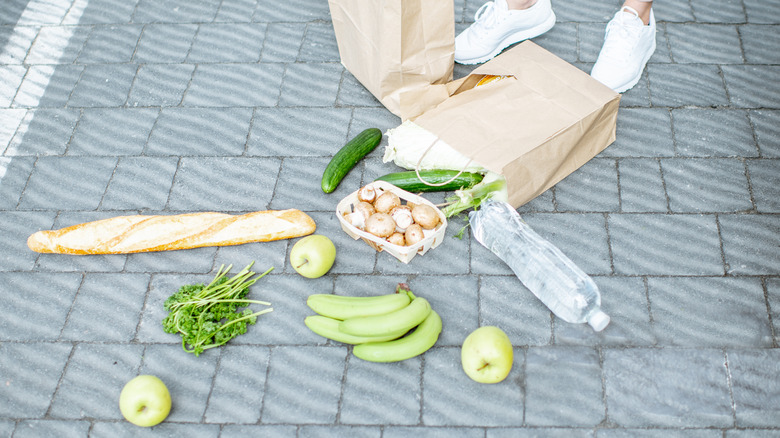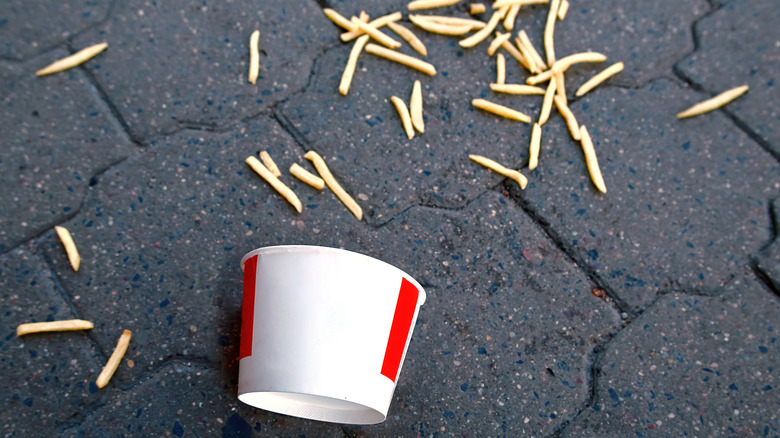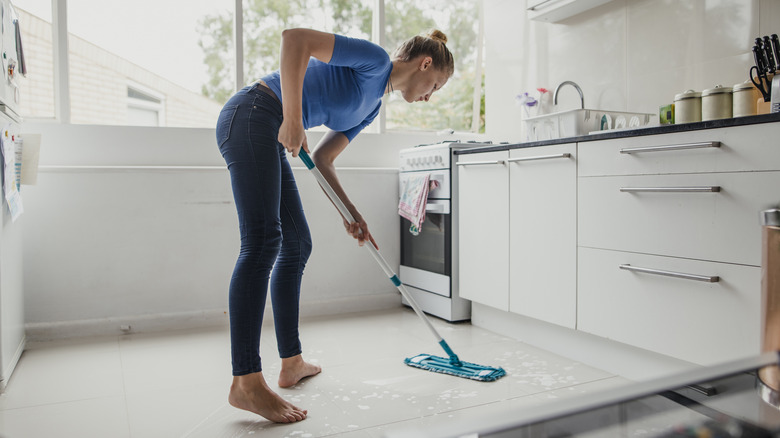The 5-Second Rule Is The Most Mysterious Food Myth
Mishaps are not uncommon in the kitchen. Dropping food items, for example, happens pretty frequently. Luckily, if we act quickly, we can still eat these damaged yet delicious foods — even after picking them up off the floor — secure in the knowledge that what we've done is safe and hygienic. How do we know this? The five-second rule, of course. This rule states that anything that hasn't been on the floor for more than five seconds is still okay to eat.
But is it really? We want to rely on this mysterious food rule to avoid waste, but how can we trust an urban legend without verifiable origins? A few theories have been put forth, naturally. One credits the rule to fearsome Mongol conqueror Genghis Khan, whose power was so great that dropped food would remain edible for however long he decreed. Another attributes it to legendary television personality Julia Child. During an episode of her influential show, "The French Chef," she proclaimed that you could always pick up food that you dropped when cooking alone. She didn't mention any set number of seconds, however, nor did she utter the words "bacteria" or "germ theory."
Fortunately, academics have come to the rescue. Over the past 15 years, a series of university studies have finally shed light on the five-second rule, with some rather surprising results.
Studies shed new light on the 5-second rule
However entertaining the theories involving Genghis Khan or Julia Child may be, we know they're probably not true. How? Because the first written reference to the five-second rule didn't appear until 1995. Khan's Monghol conquerors knew how to write, and presumably, most of Julia Child's viewership did too. So if these figures had invented the rule, we would likely know about it.
Although the origins of the five-second rule remain shrouded in mystery and legend, years of research have brought significant insights into its applicability. High school senior Jillian Clarke, during a six-week internship at the University of Illinois, provided the first substantial evidence for the rule's viability by testing the safety of gummy bears that had made contact with tile floors, according to Web MD. Unfortunately, rough tiles were concluded to be less food-friendly than smooth ones. Paul Dawson, a professor in the Clemson University Department of Food, Nutrition and Packaging Sciences, posits that the cleanliness of a floor, regardless of its surface, is the key factor in determining whether food can safely be picked up. Regardless, Dawson advises throwing out food that you dropped.
The truth about the 5-second rule
Make no mistake: Food picks up bacteria as soon as it hits the floor — even if it's just for a few milliseconds. The idea that bacteria would wait around a dropped food item for the rule's allotted time to elapse before attaching themselves is, frankly, ridiculous.
However, the amount of bacteria that the food picks up does matter, as does the length of time the food stays on the floor. According to Food Safety News, a 2014 study at Aston University confirmed these factors. The study found that bacterial contamination significantly increased after food had been on the floor for three seconds and continued to worsen for up to 30 seconds. Even so, the level of contamination remained relatively minimal.
"Consuming food dropped on the floor still carries an infection risk as it very much depends on which bacteria are present on the floor at the time," Anthony Hilton, a microbiology professor at the university told Food Safety News when the study was first published. "However the findings of this study will bring some light relief to those who have been employing the five-second rule for years, despite a general consensus that it is purely a myth."



